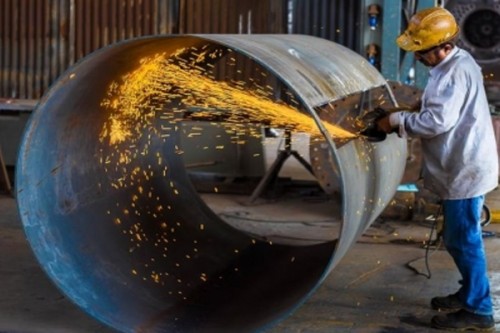Building India to build in India

New Delhi, May 26 (IANS) It is sometimes said that if you want to be great, seek out others' problems. Another rendition you might have heard is 'someone else's problem is your opportunity.'
Before Covid-19 blew in to dominate our lives, a large part of the world, particularly the West, was (and to an extent still is) dependent on China for manufacturing. With extreme disruptions to global supply chains, heavy reliance on one country for basic medical equipment, pharmaceuticals, and raw material was aggressively questioned, subsequently leading to many countries and industries strategizing to relocate their manufacturing hubs away from China or at least diversify them to distance themselves from geopolitical risks.
Compared with most of the world, the Indian economy showed 'exemplary resilience' in recovering from the pandemic. However, the associated blowback brought along with it several revelations, such as the need to become self-sufficient for long-term economic growth. As a result, structural reforms were quickly introduced to turn the crisis into an opportunity and grease the wheels of the Indian manufacturing sector.
Today, with the introduction of structural reforms, India is being considered a strong alternative to China and an attractive destination for manufacturing by various industries and countries.
Over the past three years, Prime Minister Narendra Modi has reiterated on his vision of an Aatmanirbhar Bharat (self-reliant India) with numerous initiatives launched to boost manufacturing; for instance, the visionary Make in India programme aims to transform India into a global hub for manufacturing, research and innovation, and an integral part of the global supply chain.
The initiative focuses on 25 sectors such as automobile, aviation, textiles and garments, pharma, and renewable energy. Industrial corridors are also being built across various regions. The most notable aspect is that sectors such as defence and railways have been opened to significantly higher levels of foreign direct investment. Regulatory policies have also been relaxed to facilitate investment and ease of doing business.
While growth has primarily been driven by the services sector, the manufacturing sector has untapped potential, which if leveraged effectively, can propel growth even further. Production-linked Incentive (PLI) Schemes have also been announced for 13 sectors (e.g., food products and technology products) to offer companies incentives on incremental sales from products manufactured in India, over the base year.
Specifically designed to boost domestic manufacturing in sunrise and strategic sectors, the aim is to reduce cheaper imports and import bills, improve cost competitiveness of domestically manufactured goods, and increase domestic capacity and exports. For instance, the PLI for large-scale electronics manufacturing is expected to result in a robust manufacturing ecosystem for electronic components, further leading to enhanced product manufacturing of LED products and IT hardware among others.
With many sectors undergoing major reforms, defence indigenization has also been made a priority. To create a 'global supply chain free from vulnerabilities and uncertainties,' the defence minister has invited US defence manufacturers to set up units in India and collaborate with the Indian sector.
In a one-of-its- kind deal, Airbus Defence and Space and Tata Advanced Systems entered a joint venture to manufacture C-295 medium-lift military transport aircraft, further supporting the government's vision of an Atmanirbhar Bharat. Safran, the world's second-largest aircraft equipment manufacturer, is also establishing its biggest MRO facility in India to service aero-engines.
While the country is yet to address persisting issues such as inadequate infrastructure development, complex regulatory frameworks, and a shortage of skilled workers, it cannot be said that steps are not being taken in this direction. For example, industrial corridors and smart cities are being developed to provide infrastructure based on state-of-the-art technology with modern high- speed communication and integrated logistics arrangements.
This year's budget also reported a 33 per cent increase in expenditure on infrastructure investment, with 100 critical transport infrastructure projects identified to improve logistics for the ports, coal, steel, fertilizer, and food grain sectors. To promote robust infrastructure development, the government announced the National Infrastructure Pipeline (2019), which will use private funds in addition to the public budget. The country is also receiving support from partners such as Japan, its largest partner in terms of financial cooperation for infrastructure development.
To ease regulatory burden, thousands of compliances have been reduced and legal provisions decriminalized. The use of digital technology has proved to be a game changer, introduction of the Goods and Services Tax has enhanced the movement of products across India, and amendments to labour laws are attracting foreign players with ambitious plans to scale presence in India.
India's gradual adoption of Industry 4.0 practices through initiatives such the National Manufacturing Policy (which aims to increase the share of manufacturing in the GDP to 25 per cent by 2025), shift to more automated and technology-driven processes at par with global standards, a strong domestic market and demographic advantage will surely accelerate growth, allowing the country to revitalize its manufacturing sector.

|

|

